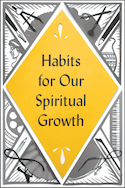What Are the Purpose and Theme of the Book of Job?

The aims of the author are quite clear as the book of Job sets forth a polemic against a wholesale approach to retribution— cause and effect for all sin in a person’s life. It also shows how a believer can triumph over tragedy even when much is unknown about the true God. The reader is given several visual snapshots into the unseen world of the throne of God and His workings (Alden, Job, 38–39).
The book of Job deals with a major problem area of fallen human existence, namely suffering. Why do people suffer (especially righteous people) if God is righteous and good? This book gives a larger perspective on the issue of theodicy (God’s justice in light of evil in the world) and demonstrates that sometimes suffering comes because of the supernatural conflict between God and Satan. In this ongoing conflict humanity often serves as the playing field for these supernatural matches of the strength, power, and stamina of the kingdom of God versus the kingdom of darkness. Ultimately, the book teaches God’s sovereignty over all.
God is in wise control (Jb 28) of the universe and of all issues in a believer’s life, both normal and abnormal, including triumphs and tragedies, affluence and poverty, adversity and prosperity. Even when those closest to the sufferer give wrong counsel and challenge the reasons for the misfortune, a righteous believer can stand confident that he is in God’s hands by understanding God’s work in creation. Therefore questioning or arguing with Him is unreasonable, but praising and repenting before Him is in order.
Chapters 1–2 and 42 are written in prose (narrative), and chaps. 3–41 are written in poetry, “except for brief introductions of the friends of Job just ahead of their addresses” (Alden, Job, 35). With the high density of poetry, Job has an impressive number of hapax legomena (terms used only one time in the book of Job or in the OT), and sometimes it is a challenge to grasp their meaning.
Critical scholars have tried to set forth the case that the book of Job was a mosaic that took shape over time as new portions of it were added. They view chaps. 1–2 and 42 as the original account, with all the poetic sections added later. But C. Hassell Bullock states, “The book of Job defies all efforts to establish its literary genre. While it has been viewed as an epic, a tragedy, and a parable, upon close analysis it is none of these even though it exhibits properties belonging to each of them” (C. Hassell Bullock, An Introduction to the Old Testament Poetic Books [Chicago: Moody, 1979], 69).
The Moody Bible Commentary
by Michael A. Rydelnik and Michael Vanlaningham
Imagine having a team of 30 Moody Bible Institute professors helping you study the Bible. Now you can with this in-depth, user-friendly,...


Free ebook: Habits for Spiritual Growth
Sign up for our weekly email and get a free download
Bible Insights by Email
Sign up for learning delivered to your inbox weekly

Free ebook: Habits for Spiritual Growth
Sign up for our weekly email and get a free download